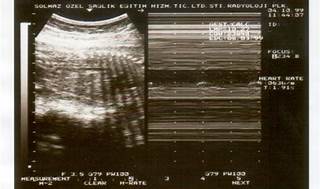A nurse is assisting in the care of a client who is in the second stage of labor. Which of the following findings should the nurse report to the provider?
Early decelerations in the FHR.
Pelvic pressure with contractions.
Bloody show from the vagina.
Uterine contraction lasting 2 min.
The Correct Answer is D
The correct answer is choice D. Uterine contraction lasting 2 min.
Choice A rationale:
Early decelerations in the FHR are usually not a concern during the second stage of labor. They are a normal physiological response to the compression of the fetal head during contractions and are generally considered benign.
Choice B rationale:
Pelvic pressure with contractions is a normal finding during the second stage of labor as the baby descends into the pelvis. It does not typically require reporting to the provider unless it is associated with other concerning symptoms.
Choice C rationale:
A bloody show from the vagina is a common and expected finding during the second stage of labor. It indicates that the cervix is dilating and effacing, which is a normal part of the labor process.
Choice D rationale:
A uterine contraction lasting 2 minutes is abnormal and could indicate uterine tachysystole, which can lead to fetal distress due to reduced uterine blood flow and oxygen to the fetus. This finding should be reported to the provider immediately.
Nursing Test Bank
Naxlex Comprehensive Predictor Exams
Related Questions
Correct Answer is C
Explanation
The correct answer is choice C. Assist the client to breathe into a paper bag.
Choice A rationale:
Instructing the client to maintain a breathing rate no less than twice the normal rate is not appropriate. This could exacerbate hyperventilation, leading to further lightheadedness and tingling.
Choice B rationale:
Administering oxygen via nasal cannula is not necessary in this situation. The symptoms are due to hyperventilation, not a lack of oxygen.
Choice C rationale:
Assisting the client to breathe into a paper bag helps to rebreathe carbon dioxide, which can correct the respiratory alkalosis caused by hyperventilation. This will alleviate the symptoms of lightheadedness and tingling.
Choice D rationale:
Having the client tuck her chin to her chest is not a recognized intervention for hyperventilation. It would not address the underlying issue of respiratory alkalosis.
Correct Answer is B
Explanation

The correct answer is choice B. Assure the client that the score is within the expected range.
Choice A rationale:
Administering oxygen and notifying the provider is not necessary for a biophysical profile (BPP) score of 10. A score of 10 indicates that the fetus is well-oxygenated and there are no signs of distress.
Choice B rationale:
A BPP score of 10 is considered normal and reassuring, indicating that the fetus is well-oxygenated and there are no signs of distress. Therefore, the nurse should assure the client that the score is within the expected range.
Choice C rationale:
Offering the client orange juice and repeating the assessment in 1 hour is not necessary for a BPP score of 10. This action might be considered if the score were lower and there was a need to reassess fetal well-being.
Choice D rationale:
Assisting the client into a side-lying position is not required for a BPP score of 10. This position is typically recommended to improve uteroplacental blood flow in cases of fetal distress or lower BPP scores.
Whether you are a student looking to ace your exams or a practicing nurse seeking to enhance your expertise , our nursing education contents will empower you with the confidence and competence to make a difference in the lives of patients and become a respected leader in the healthcare field.
Visit Naxlex, invest in your future and unlock endless possibilities with our unparalleled nursing education contents today
Report Wrong Answer on the Current Question
Do you disagree with the answer? If yes, what is your expected answer? Explain.
Kindly be descriptive with the issue you are facing.
